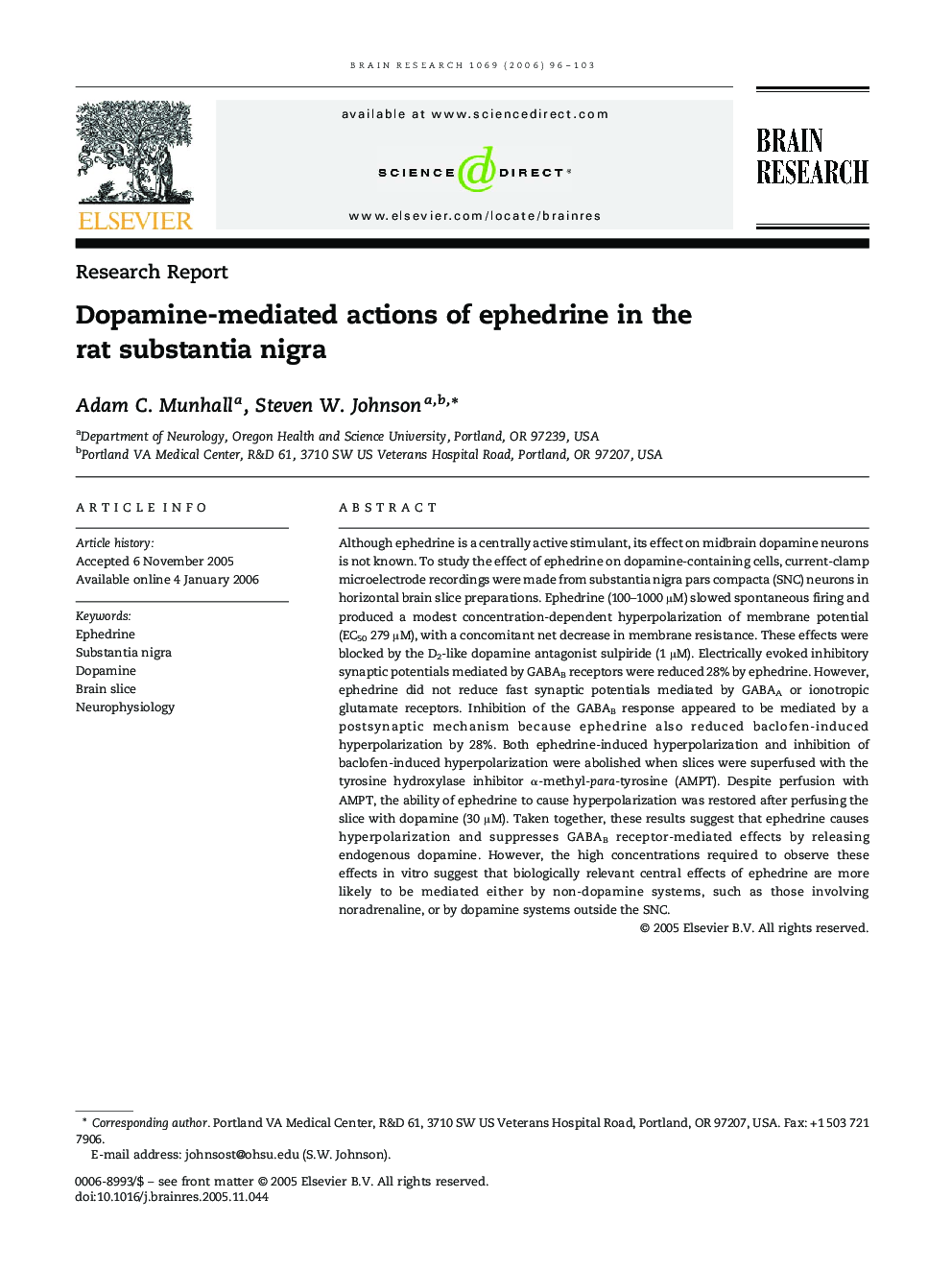| Article ID | Journal | Published Year | Pages | File Type |
|---|---|---|---|---|
| 4333493 | Brain Research | 2006 | 8 Pages |
Although ephedrine is a centrally active stimulant, its effect on midbrain dopamine neurons is not known. To study the effect of ephedrine on dopamine-containing cells, current-clamp microelectrode recordings were made from substantia nigra pars compacta (SNC) neurons in horizontal brain slice preparations. Ephedrine (100–1000 μM) slowed spontaneous firing and produced a modest concentration-dependent hyperpolarization of membrane potential (EC50 279 μM), with a concomitant net decrease in membrane resistance. These effects were blocked by the D2-like dopamine antagonist sulpiride (1 μM). Electrically evoked inhibitory synaptic potentials mediated by GABAB receptors were reduced 28% by ephedrine. However, ephedrine did not reduce fast synaptic potentials mediated by GABAA or ionotropic glutamate receptors. Inhibition of the GABAB response appeared to be mediated by a postsynaptic mechanism because ephedrine also reduced baclofen-induced hyperpolarization by 28%. Both ephedrine-induced hyperpolarization and inhibition of baclofen-induced hyperpolarization were abolished when slices were superfused with the tyrosine hydroxylase inhibitor α-methyl-para-tyrosine (AMPT). Despite perfusion with AMPT, the ability of ephedrine to cause hyperpolarization was restored after perfusing the slice with dopamine (30 μM). Taken together, these results suggest that ephedrine causes hyperpolarization and suppresses GABAB receptor-mediated effects by releasing endogenous dopamine. However, the high concentrations required to observe these effects in vitro suggest that biologically relevant central effects of ephedrine are more likely to be mediated either by non-dopamine systems, such as those involving noradrenaline, or by dopamine systems outside the SNC.
